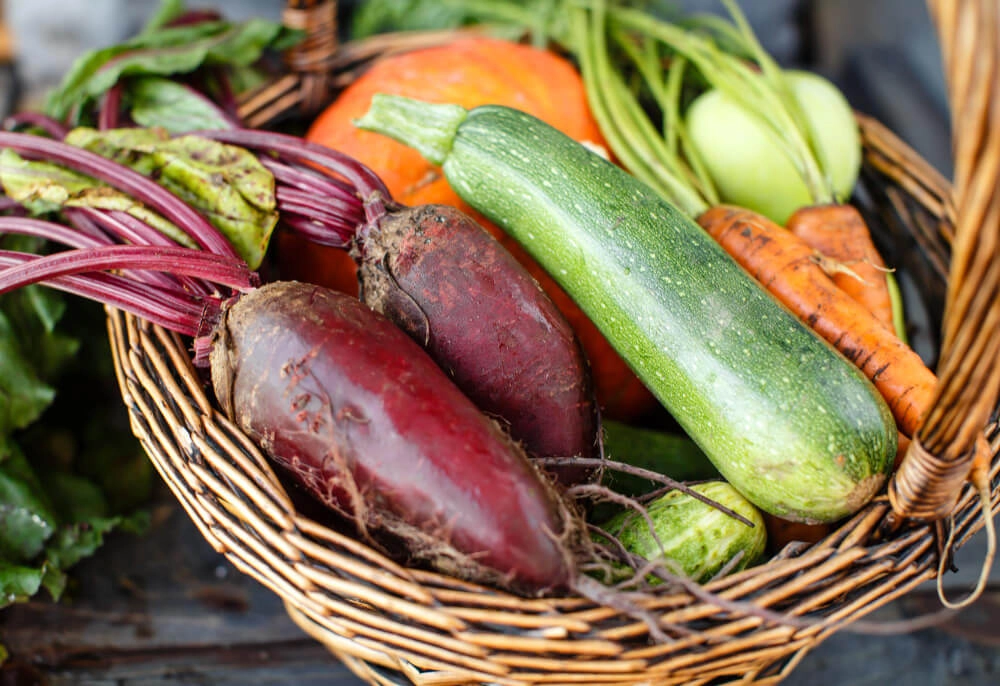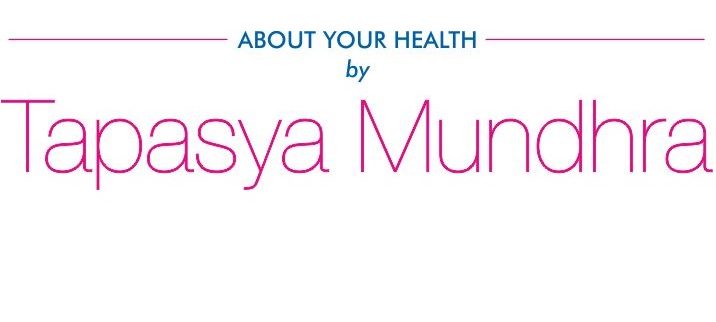Ever wonder why some people depend on salads, while others feel better with warm, hearty meals?
Or why one person wakes up full of energy, while another needs slow, steady mornings?
The answer lies not in trends, but in your body’s natural blueprint, your dosha.
In the world of Ayurveda, this blueprint is defined by three energies: Vata, Pitta, and Kapha. Each of us has a unique combination of these doshas, which influence how we eat, sleep, digest, and even think.
As a holistic health coach and one of Delhi’s leading dietitians, I have seen how powerful it is to align your food with your body type. It’s not about restriction, it’s about a real connection with your body’s needs.
In this detailed Ayurveda body type guide, I will help you explore your dosha, understand what foods best support your constitution, and offer practical tools like food charts, daily routines, and mindful eating tips.
Let’s help you tune in to what your body’s been trying to tell you all along.
What Are the Three Doshas? (Vata, Pitta, Kapha Explained)
According to Ayurveda, every person is made up of three energies or doshas: Vata, Pitta, and Kapha. While all three exist within us, one or two usually dominate, shaping everything from our digestion to our mood and energy levels.
Here’s a quick Vata, Pitta, Kapha explained:
- Vata: Made of air and ether, Vata is all about movement. It governs your breath, circulation, nervous system, and creativity. Vata types tend to be energetic, imaginative, and fast-moving, but when imbalanced, they may experience anxiety, dryness, and irregular digestion.
- Pitta: Comprised of fire and water, Pitta rules digestion, metabolism, and transformation. Pitta types are focused, driven, and passionate, with strong digestion and a sharp mind. But excess Pitta can lead to irritability, inflammation, or digestive heat.
- Kapha: A blend of earth and water, Kapha is stable, nurturing, and grounding. Kapha types are calm, compassionate, and strong. But when out of balance, they may feel sluggish, heavy, or emotionally stuck.
Identifying your Ayurvedic body type helps you choose the right foods, routines, and lifestyle changes to bring your body and mind into balance.
Ayurveda isn’t just about herbs or detoxes; it’s a complete science of life. Still, there are common myths about Ayurveda that often confuse people new to the practice.
How to Identify Your Ayurvedic Body Type
Not sure which dosha dominates?
Start by evaluating your physical traits, emotional tendencies, and digestion patterns. This is key to identifying your Ayurvedic body type. You may also be a dual type (e.g., Vata-Pitta), requiring a balanced approach.
The table below will help you identify your Ayurvedic body type by comparing key physical, emotional, and digestive traits associated with each dosha.
| Traits | Vata | Pitta | Kapha |
| Body Frame | Thin, light, delicate build | Medium, athletic, well-proportioned | Sturdy, broad, strong build |
| Skin | Dry, rough, cold | Warm, oily, prone to redness | Cool, soft, moist |
| Digestion | Irregular, bloating, or constipation | Strong, fast metabolism | Slow, steady, may feel heavy after meals |
| Mental Traits | Quick thinker, creative, restless | Focused, ambitious, perfectionist | Calm, compassionate, content |
| Energy Levels | Variable, bursts of energy | Consistent, high stamina | Slow but steady energy |
| Typical Imbalance | Anxiety, dryness, fatigue | Irritability, heartburn, inflammation | Lethargy, weight gain, congestion |
What to Eat for Your Body Type in Ayurveda
Your body type (dosha) affects how you feel and what foods work best for you. By balancing doshas through food, you can improve digestion, restore inner harmony, and feel healthier every day.
Below, we explain the Vata, Pitta, and Kapha food chart to help you choose the right foods for your Ayurvedic body type.
Ayurvedic Diet for Vata Dosha
The Ayurvedic diet for Vata focuses on bringing warmth, moisture, and stability to balance Vata’s naturally light, dry, and irregular tendencies. Vata types often benefit from cooked, nourishing foods that ground their energy and support digestion.
Best Foods for Vata Body Type:
- Cooked grains like rice, oats, and quinoa
- Root vegetables and squashes
- Warm milk, soaked nuts, ghee, and hearty soups
Avoid:
- Raw salads, cold drinks, dry snacks, caffeine
If you identify with Vata traits, following a Vata Pitta Kapha food chart can simplify your meal planning. Always aim for foods that are warm, soft, and oily to keep Vata in balance.

Ayurvedic Diet for Pitta Dosha
The Ayurvedic diet for Pitta is designed to cool and calm the fiery nature of this dosha. Pitta types thrive on foods that are hydrating, fresh, and slightly sweet, helping to manage heat, inflammation, and intensity.
Diet Plan for Pitta Dosha:
- Fresh fruits like melons, sweet mangoes, and pears
- Leafy greens, cucumbers, and asparagus
- Coconut water, milk, basmati rice, and lentils
Avoid:
- Spicy, oily, or fermented foods
- Excessive caffeine, alcohol, tomatoes, and vinegar
A well-balanced diet plan for Pitta dosha is especially important in warmer months, helping to reduce acidity, anger, and irritability. Cooling herbs like coriander and fennel are also beneficial.
Ayurvedic Diet for Kapha Dosha
The Ayurvedic diet for Kapha promotes stimulation and lightness. Since Kapha types are naturally heavy, cool, and slow, their diet should include foods that are dry, warm, and spicy to counterbalance those qualities.
Diet Plan for Pitta Dosha:
- Steamed or roasted vegetables like broccoli and cauliflower
- Legumes (lentils, chickpeas), barley, and millet
- Warming spices like ginger, turmeric, cinnamon, and black pepper
Avoid:
Heavy dairy, fried or oily foods, sugary treats, and cold drinks
A Kapha pacifying diet helps support metabolism, reduce water retention, and prevent sluggishness. If you tend to feel heavy or unmotivated, this approach can help you feel lighter and more energized.
If you are struggling with stubborn weight or low energy, adjusting your diet is key, but you may wonder, Is Ayurvedic weight loss truly safe and effective? Here’s what you should know.
Ayurvedic Eating Habits for All Body Types
In Ayurveda, how you eat is just as important as what you eat. No matter your dosha, certain mindful eating practices can support better digestion, boost energy, and promote long-term balance.
Here are some universal Ayurvedic eating habits that benefit everyone, Vata, Pitta, and Kapha alike:
- Eat at regular times: Following a consistent meal schedule helps regulate digestion and keeps your body’s natural rhythms in sync.
- Avoid eating when stressed or distracted: Your body can’t digest properly when it’s tense or unfocused. Pause, breathe, and eat with awareness.
- Favor fresh, seasonal foods: Freshly prepared meals made with seasonal ingredients are easier to digest and provide the nutrients your body truly needs.
- Sit down and eat in a calm environment: Avoid multitasking or eating on the go. A quiet, peaceful space allows your body to fully absorb what you are feeding it.
Remember, balancing doshas through food is not just about picking the right ingredients; it’s about building a conscious connection with your meals and creating a routine that supports both your body and mind.
Want to go deeper into how to eat the Ayurvedic way? Explore our beginner’s guide to the Ayurvedic diet for foundational tips and sample meals.

How to Balance Vata, Pitta, and Kapha
Each dosha has its own natural qualities, and restoring balance is all about choosing the right foods that bring those qualities into harmony. When you eat with your body type in mind, you support your digestion, energy, mood, and overall well-being.
Here’s a quick guide to balancing Vata, Pitta, and Kapha:
- Vata: Light and dry, Vata benefits from warm, moist, and oily meals. Nourishing soups, cooked grains, ghee, and root vegetables help ground and hydrate the body. Avoid cold or raw foods that can increase imbalance.
- Pitta: Naturally hot and intense, Pitta needs cooling, mildly spiced, and fresh foods. Think fruits, greens, and soothing herbs like mint and fennel. Limit spicy, fried, and acidic foods that fuel excess heat.
- Kapha: Heavy and slow by default, Kapha thrives on dry, light, and stimulating foods. Roasted vegetables, legumes, and warming spices like ginger or turmeric help energize and reduce sluggishness. Avoid heavy dairy, sweets, and oily foods.
A clear Vata Pitta Kapha food chart or a consultation with an Ayurvedic dietician can help you fine-tune your meals, especially during seasonal transitions when imbalances are more common.
Balancing doshas through food is a daily practice, and the more in tune you are with your body, the easier it becomes.
For a deeper, guided approach, explore trusted Ayurvedic treatments for weight loss and how they align with your body type.
Conclusion
Healing doesn’t begin in a pill; it begins on your plate. When you understand your dosha and choose foods that support your unique constitution, you unlock the body’s natural intelligence to heal, energize, and thrive.
As a trusted holistic nutritionist and the best dietitian in Delhi, I have seen firsthand how balancing doshas through food can transform lives. Whether you are looking to regain digestive strength, weight loss, or simply feel better in your skin, eating for your dosha is the first step.
Need personalized guidance?
Book a one-on-one consultation with me, Tapasya Mundhra, and let’s create your ideal wellness roadmap, rooted in the wisdom of Ayurveda and based on your life.
Frequently Asked Questions (FAQ)
Question: How to balance Vata, Pitta, and Kapha in the body?
Answer: You can balance your doshas by choosing the right foods, following a consistent daily routine, and adapting your lifestyle to the seasons. Warm, cooling, or stimulating meals based on your dosha can make a big difference.
Question: How to eat according to your dosha?
Answer: Start by identifying your dominant dosha and then choose foods that support balance. A personalized diet based on your constitution can improve digestion, energy, and overall well-being.
Question: How many types of body are there according to Ayurveda?
Answer: There are seven body types in Ayurveda, three single doshas (Vata, Pitta, Kapha) and four dual or combined types. Each type requires different dietary and lifestyle choices to stay balanced.
Tapasya Mundhra is a Clinical Dietitian and Wellness Consultant based in Newark, USA, specializing in Nutrition for Weight Loss, Detox Diets, and Stress Management. With over 13 years of experience, she helps clients optimize their physical and mental well-being through personalized diet plans, moderate workouts, and holistic health strategies. Trusted by countless clients, she is dedicated to achieving sustainable health goals.

